

Does the thought of putting a lens in your eye seem frightful and painful? Implantable Collamer Lens (ICL) surgery places a small lens in your eye to correct your vision. The procedure takes around 10 minutes for each eye, and it uses the same topical anesthesia that is administered for cataract surgery, which is currently very common in Japan.
ICL surgery has been performed in Japan for as long as LASIK surgery has. Both procedures were first performed by the director of the Sanno Eye Center, Dr. Kimiya Shimizu, who also developed the ICL KS-AquaPORT® lens that is now used in over 70 countries around the world. Dr. Shimizu is an internationally recognized surgeon with extensive experience in his fields.
ICL surgery was first performed in Japan in 1997, and since then there has not been one reported case of any resultant decline in visual acuity. ICL surgery is an extremely safe procedure.

After ICL surgery, your life will change from feeling like “I want to see clearly” to “I can see clearly!” *1
Although the lens implanted in your eye has a somewhat complex name of Implantable Collamer Lens (ICL), the post-operative care is quite simple and only requires regular eye checks; there is no need for daily maintenance such as washing the lens to keep it clean. The ICL does not feel uncomfortable or like there is some foreign object in the eye, and you cannot even see that it is in there. *2
Many professional athletes also use ICL, and so far there are no reports of the lens breaking or becoming dirty while in the eye. So you can use ICL semi-permanently, and be free of the hassle of disposable lenses.
The incisional wound is very small at only 3mm, so it does not cause dry eyes or feel unpleasant. *1,2
The ICL prescription range covers high myopia (near-sightedness) and hyperopia (far-sightedness) both of which cannot be treated by LASIK, and also astigmatism (blurred vision).
- *1
- The vision and feel of ICL will vary for each person.
- *2
- ICL does not improve the symptoms of people who already have dry eyes.
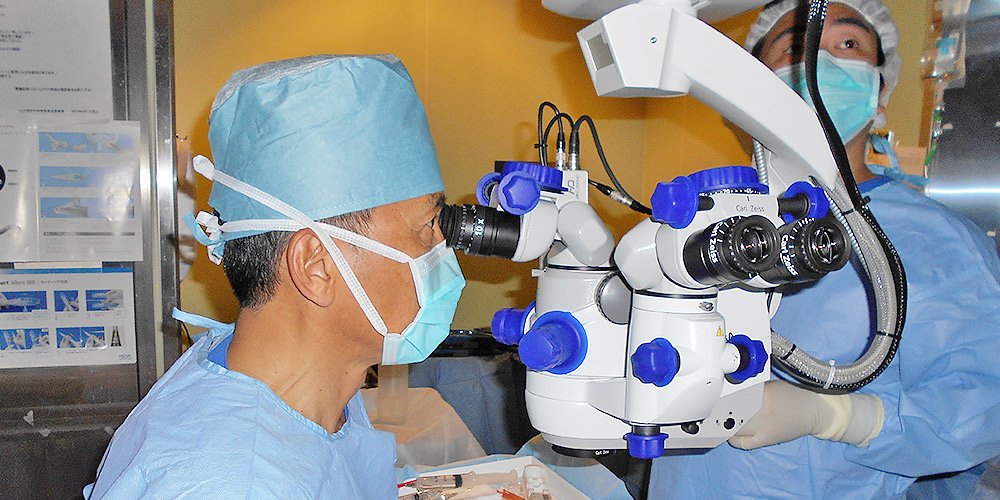
ICL surgery is a day-procedure that uses a relatively painless topical anesthesia*, and takes around 10 minutes for each eye (basically both eyes are done on the same day). You can see fairly clearly straight after the operation, and after several hours of rest your vision becomes even clearer; it is around 70% restored on the day of the operation, and you can go home the same day without needing your glasses or normal contact lenses. Your vision is 90% to 100% restored by the day after ICL surgery, so you can do desk work and other general tasks.
The incisional wound is usually around 3mm wide, and it heals naturally without needing any stitches.
*The feel of ICL will vary for each person.
- Flow of ICL surgery
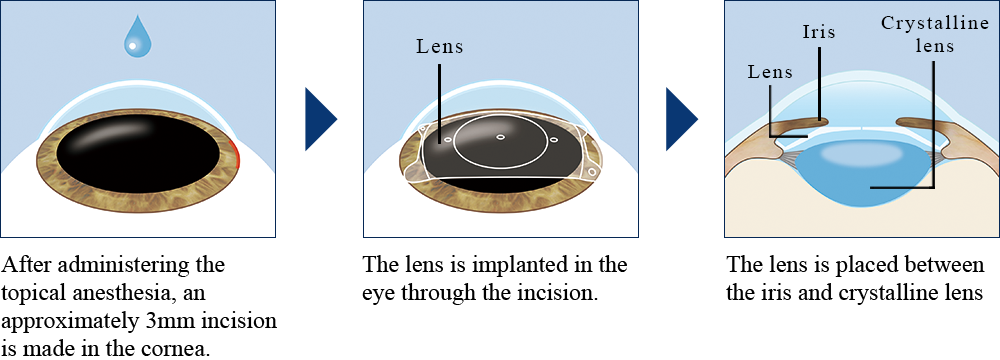
Cost of the surgery
The cost of ICL surgery is listed below. Please feel free to inquire about anything that is unclear about the cost. Payment can be made in cash or by credit card.
-
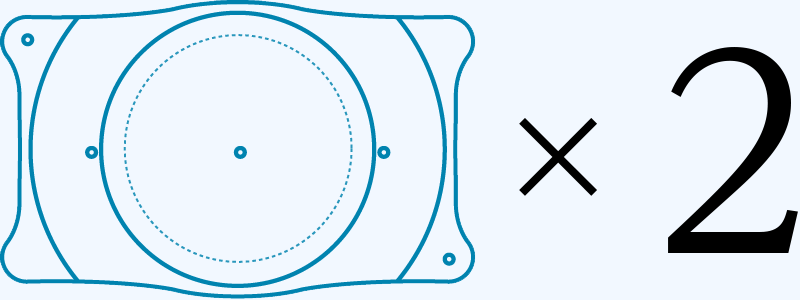
-
Both eyes
Standard (non-toric) lens (for Myopia correction)
770,000 yen
Toric Lens (for Myopia and Astigmatism)
803,000 yen
(All prices include tax)
-
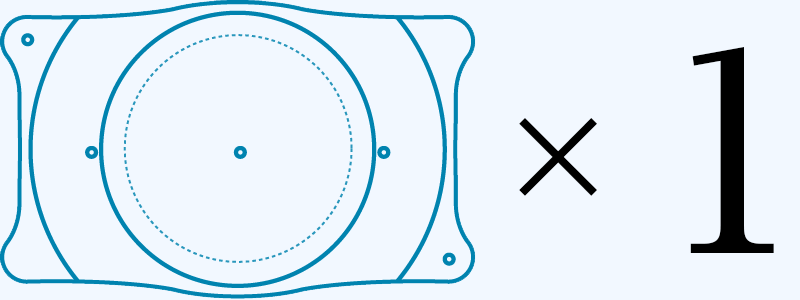
-
One eye
Standard (non-toric) lens (for Myopia)
385,000 yen
Toric Lens (for Myopia and Astigmatism)
401,500 yen
(All prices include tax)
* A deposit of 50,000 yen (tax included) will be charged on the day of the preoperative examination.
* The deposit of 50,000 yen will be used as part of the surgery fee.
* The deposit is basically non-refundable.

I established the Sanno Eye Center in April 2016. I always strive to provide optimal and satisfactory treatment for each patient through careful counselling, detailed tests and precise surgical procedures. All of the doctors at the Sanno Eye Center are world-class surgeons with extensive experience.
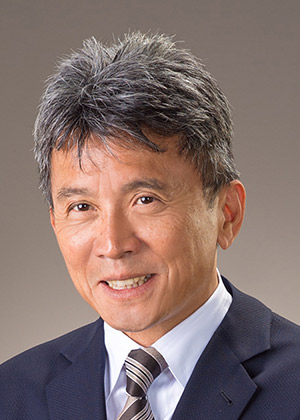
- Kimiya Shimizu
- Director General, Sanno Eye Center
Professor, International University of Health and Welfare
Speciality: Cataract, Refractive Surgery
ICL Senior Expert Instructor
- CV
-
Professor Emeritus, Kitasato University
Graduate of Kitasato University; Ph. D in Medicine, the University of Tokyo
Former Chairman, Ophthalmology Department, Kitasato University School of Medicine
Honorary Member and Board Certified Ophthalmological Medical Specialist, Japanese Ophthalmological Society (JOS); Honorary Member, Japanese Society of Ophthalmic Surgery (JSOS); Honorary Member and Auditor, Japanese Society of Cataract and Refractive Surgery (JSCRS); Board Member, Asia Pacific Association of Cataract and Refractive Surgeons (APACRS); Board Member, School for Handicapped Children, Nemunoki Gakuen; Board Member, The Eye Mate, Inc.He acquired Ph. D in Medicine at the University of Tokyo. Served as Director of the Ophthalmological Department, Musashino Red Cross Hospital and subsequently as the Chairman of the Ophthalmology Department at the Kitasato University School of Medicine. He has held his current position since April 2016. A pioneer in the development of contemporary cataract surgery, he conducted the first ophthalmological surgery using topical anesthesia and developed Toric intraocular lens. He also introduced LASIK, ICL and other refractive surgery to Japan. He is the developer of Hole ICL (ICL KS-AquaPORT) and one of the only two ICL Senior Expert Instructors in Japan (as of May 2020). Respected worldwide as an expert in refractive surgery and cataract surgery, his ophthalmic surgery combining the two is highly regarded overseas for enhancing the quality of life (QOL) of many patients.
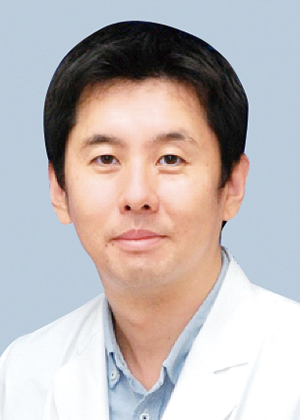
- Shuntaro Tsunehiro
- Vice Director, Sanno Eye Center Lecturer, IUHW
Speciality: Cataract, Refractive Surgery
ICL Instructor
- CV
-
Graduate, Niigata University: Ph.D in Medicine, Kitasato University
Former Assistant Professor, Department of Ophthalmology, Kitasato University School of Medicine
Former Assistant, Department of Ophthalmology, Kitasato University HospitalBoard Certified Ophthalmological Medical Specialist, JOS; Member, JOS; Member, JSCRS; Member, JSOS; Member, Japanese Retina and Vitreous Society (JRVS).

Main papers on refractive surgery
- Kato S, Shimizu K, Igarashi A, Assessment of low-vault cases with an implantable collamer lens. PLoS One, 15(11): e0241814, 2020
- Satou T, Shimizu K, Tsunehiro S, Igarashi A, Kato S, Koshimizu M, Niida T:Posterior chamber phakic IOLs vs. LASIK: benefits and complications. Development of a new intraocular lens power calculation method based on lens position estimated with optical coherence tomography. Scientific Reports, 10(1): Article number: 6501 (2020) , 2020.
- Kato S, Shimizu K, Igarashi A, Kawamorita T: Kinetic visual acuity, stereopsis, and ocular deviation with an implantable collamer lens. J Cataract Refract Surg. 2019; 45(12), 1777-1781.
- Igarashi A, Shimizu K, Kato S, Kamiya K: Predictability of the vault after posterior chamber phakic intraocular lens implantation using anterior segment optical coherence tomography. J Cataract Refract Surg. 2019; 45(8): 1099-1104.
- Kato S, Shimizu K, Igarashi A:Vault Changes Caused by Light-Induced Pupil Constriction and Accommodation in Eyes With an Implantable Collamer Lens. Cornea. 2019; 38(2):217-220.
- Igarashi A:Posterior chamber phakic IOLs vs. LASIK: benefits and complications. Expert Review of Ophthalmology. 2019; 14(1):43-52.
- Kamiya K, Shimizu K, Igarashi A, Kitazawa Y, Kojima T, Nakamura T, Ichikawa K.:Posterior Chamber Phakic Intraocular Lens Implantation in Eyes with an Anterior Chamber Depth of Less Than 3 mm: A Multicenter Study. Sci Rep. 2018; 8(1): 13322.
- Kojima T, Kitazawa Y, Nakamura T, Takahashi M, Kamiya K, Ichikawa K, Igarashi A, and Shimizu K:Prospective Randomized Multicenter Comparison of the Clinical Outcomes of V4c and V5 Implantable Collamer Lenses: A Contralateral Eye Study. J Ophthalmol. 2018; eCollection 2018:7623829.
- Takahashi M, Kamiya K, Shoji N, Kato S, Igarashi A, Shimizu K:Intentional Undercorrection by Implantation of Posterior Chamber Phakic Intraocular Lens with a Central Hole (Hole ICL) for Early Presbyopia. Biomed Res Int. 2018; eCollection 2018:6158520.
- Kamiya K, Shimizu K, Igarashi A, et al. Posterior chamber phakic intraocular lens implantation: comparative, multicentre study in 351 eyes with low-to-moderate or high myopia. Br J Ophthalmol. 2018; 102(2):177-181.
- Totsuka K, Ishikawa H, Kamiya K, Shoji N, Shimizu K:Pupil Dynamics Induced by Light Reflex after Posterior Chamber Phakic Intraocular Lens Implantation. J Ref Surg. 2017; 33(10):704-707.
- Kamiya K, Igarashi A, Hayashi K, Negishi K, Sato M, Bissen-Miyajima H; Survey Working Group of the Japanese Society of Cataract and Refractive Surgery.:A Multicenter Retrospective Survey of Refractive Surgery in 78,248 Eyes. J Refract Surg. 2017; 33(9): 598-602.
- Kawamorita T, Shimizu K, Shoji N : Theoretical study on the need for laser iridotomyin an implantable collamerlens with a hole using computational fluid dynamics.Eye (Lond). 2017;31(5):795-801.
- Kamiya K, Takahashi M, Takahashi N, Shoji N, Shimizu K. Monovision by Implantation of Posterior Chamber Phakic Intraocular Lens with a Central Hole (Hole ICL) for Early Presbyopia. Sci Rep. 2017; 7(1):11302.
- Goukon H, Kamiya K, Shimizu K, Igarashi A. Comparison of corneal endothelial cell density and morphology after posterior chamber phakic intraocular lens implantation with and without a central hole. Br J Ophthalmol. 2017; 101(11):1461-1465.
- Iijima A, Shimizu K, Yamagishi M, Kobashi H, Igarashi A, Kamiya K. Assessment of subjective intraocular forward scattering and quality of vision after posterior chamber phakic intraocular lens with a central hole (Hole ICL) implantation. Acta Ophthalmol. 2016; 94(8):e716-e720.
- Shimizu K, Kamiya K, Igarashi A, Kobashi H: Long-Term Comparison of Posterior Chamber Phakic Intraocular Lens With and Without a Central Hole (Hole ICL and Conventional ICL) Implantation for Moderate to High Myopia and Myopic Astigmatism: Consort-Compliant Article. Medicine. 2016; 95(14):e3270.
- Kawamorita T, Shimizu K, Shoji N: Effect of hole size on fluid dynamics of a posterior-chamber phakic intraocular lens with a central perforation by using computational fluid dynamics. Graefes Arch Clin Exp Ophthalmol. 2016; 254(4): 739-44.
- Kamiya K, Shimizu K, Igarashi A, et al. Effect of myopic defocus on visual acuity after phakic intraocular lens implantation and wavefront-guided laser in situ keratomileusis. Sci Rep. 2015; 21:10456.
- Kamiya K, Shimizu K, Ando W, Igarashi A, Iijima K, Koh A : Comparison of vault after implantation of posterior chamber phakic intraocular lens with and without a central hole. J Cataract Refract Surg. 2015; 41(1): 67-72.
- Kobashi H, Kamiya K, Igarashi A, et al. Long-term quality of life after posterior chamber phakic intraocular lens implantation and after wavefront-guided laser in situ keratomileusis for myopia. J Cataract Refract Surg. 2014; 40(12):2019–2024.
- Kamiya K, Shimizu K, Igarashi A, Kobashi H: Factors Influencing Long-term Regression After Posterior Chamber Phakic Intraocular Lens Implantation for Moderate to High Myopia. Am J Ophthalmol. 2014; 158(1): 179-184.
- Igarashi A, Shimizu K, Kamiya K:Eight-Year Follow-Up of Posterior Chamber Phakic Intraocular Lens Implantation for Moderate to High Myopia. Am J Ophthalmol. 2013; 157(3): 532-539.
- Kamiya K, Shimizu K, Saito A, Igarashi A, Kobashi H: Comparison of Optical Quality and Intraocular Scattering after Posterior Chamber Phakic Intraocular Lens with and without a Central Hole (Hole ICL and Conventional ICL) Implantation Using the Double-Pass Instrument. 2013; PLoS One. 8(6): e66846.
- Kamiya K, Igarashi A, Shimizu K, et al. Visual performance after posterior chamber phakic intraocular lens implantation and wavefront-guided laser in situ keratomileusis for low to moderate myopia. Am J Ophthalmol. 2012; 153(6):1178–1186.
- Shimizu K, Kamiya K, Igarashi A, et al. Early clinical outcomes of implantation of posterior chamber phakic intraocular lens with a central hole (Hole ICL) for moderate to high myopia. Br J Ophthalmol. 2012; 96(3):409–412.
- Shimizu K, Kamiya K, Igarashi A, et al. Intraindividual comparison of visual performance after posterior chamber phakic intraocular lens with and without a central hole implantation for moderate to high myopia. Am J Ophthalmol. 2012; 154(3):486–494.
- Kamiya K, Shimizu K, Igarashi A, et al. Clinical outcomes and patient satisfaction after visian implantable collamer lens removal and phacoemulsification with intraocular lens implantation in eyes with induced cataract. Eye (Lond). 2010; 24(2):304–309.
- Igarashi A, Kamiya K, Shimizu K, Komatsu M:Visual performance after implantable collamer lens implantation and wavefront-guided laser in situ keratomileusis for high myopia. Am J Opthalmol. 2009; 148(1):164-170.
Click here for more papers
- Is there any age limit on who can have ICL surgery?
- The basic age range for ICL surgery is 18 to 50 years, but it is also possible for people aged between 50 to 55 years with a suitable prescription range for treating presbyopia (age-related long-sightedness).
- Is the surgery painful?
- You will feel virtually no pain during the surgery, and we use a topical anesthesia that is also relatively painless.
- Can I also have ICL surgery if I’ve already had LASIK surgery?
- Yes, you can still have ICL surgery even if you’ve had LASIK and other corneal surgery or cataract surgery.

4-minute walk from Aoyama-itchome Station Exit 4 (South) on the Tokyo Metro Ginza Line and Hanzomon Line, and the Oedo Line 4-minute walk from Nogizaka Station Exit 3 on the Tokyo Metro Chiyoda Line
*We recommend that you use the subway if possible, as there is limited parking available.
Examination and treatment times
| Mon | Tue | Wed | Thu | Fri | Sat | Sun/ Public Holidays |
|
|---|---|---|---|---|---|---|---|
| 8:30 a.m. to 11:30 a.m. |
○ | ○ | ○ | ○ | ○ | ○ | - |
| 1:00 p.m. to 4:30 p.m. |
○ | ○ | ○ | ○ | ○ | - | - |













